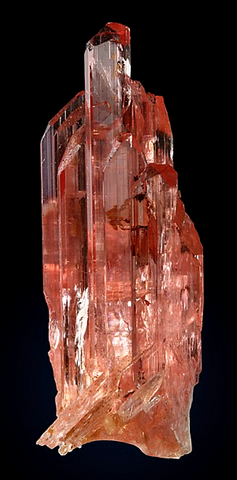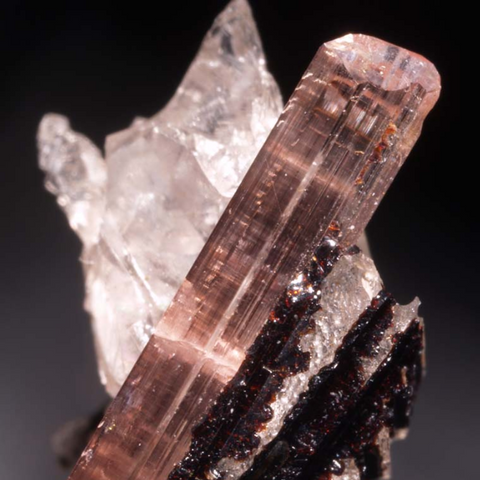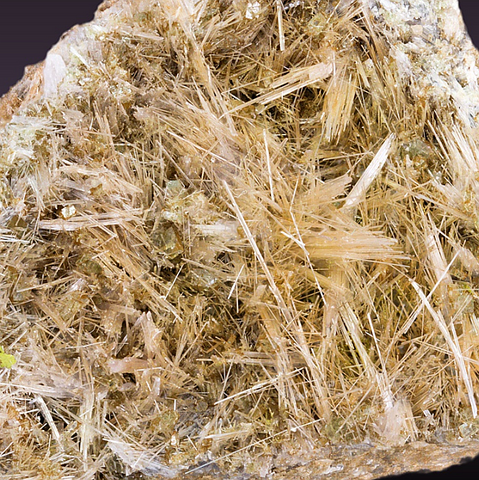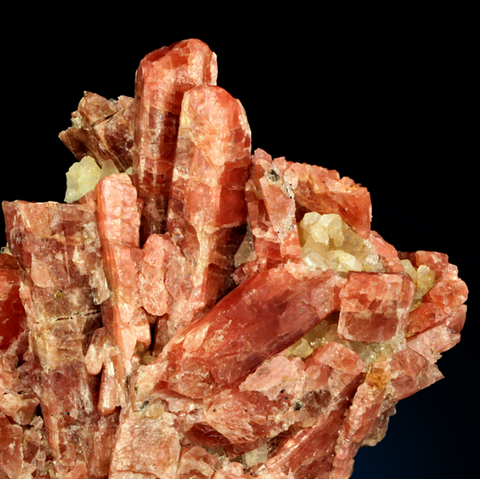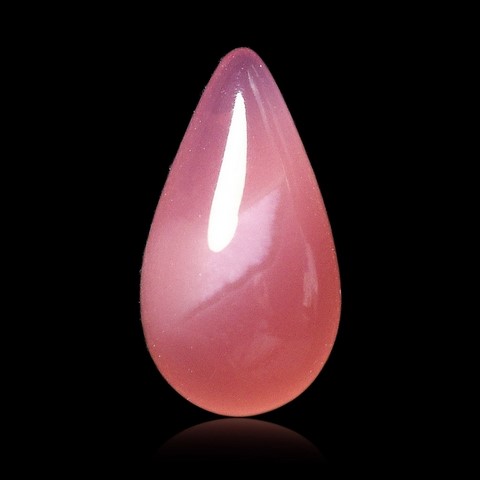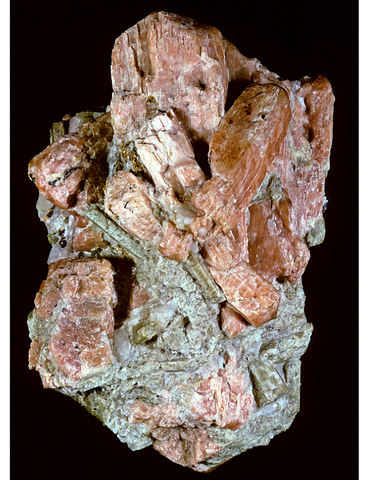 Bustamite - Encyclopedia
Bustamite - Encyclopedia
Class : Silicates
Subclass : Inosilicates
Crystal system : Triclinic
Chemistry : CaMnSi2O6
Rarity : Uncommon
Bustamite belongs to the group of pyroxenoids. It has a structure identical to that of wollastonite and strongly resembles rhodonite, with which it often shares deposits but from which it differs by a high calcium content (12 to 25% CaO). Its chemistry is also quite variable, iron, magnesium and zinc being able to enter into its composition. It is found in manganiferous skarns or metamorphic manganese deposits, sometimes in manganese hydrothermal veins. It owes its name to the Mexican General Anastasio Bustamente who discovered the mineral. Bustamite crystals may evoke rhodonite, but more commonly radiating groups of flattened lamellae or fine acicular crystals, pinkish to red in color, turning brown and then black by surface oxidation are more commonly observed.
Main photo : Bustamite from Broken Hill, New South Wales, Australia © Weinrich Mineral
Bustamite in the World
Right photo : Bustamite from Franklin Mine, New Jersey, USA © Rock Currier
Twinning
Twin known on {110} but rare.
Fakes and treatments
No fake identified for this mineral species.
Hardness : 5.5 to 6.5
Density : 3.3 to 3.4
Fracture : Irregular
Streak : White
TP : Translucent to transparent
RI : 1.640 to 1.710
Birefringence : 0.015
Optical character : Biaxial -
Pleochroism : Visible
Fluorescence : Red
Solubility : Hydrochloric acid
Magnetism : None
Radioactivity : None

